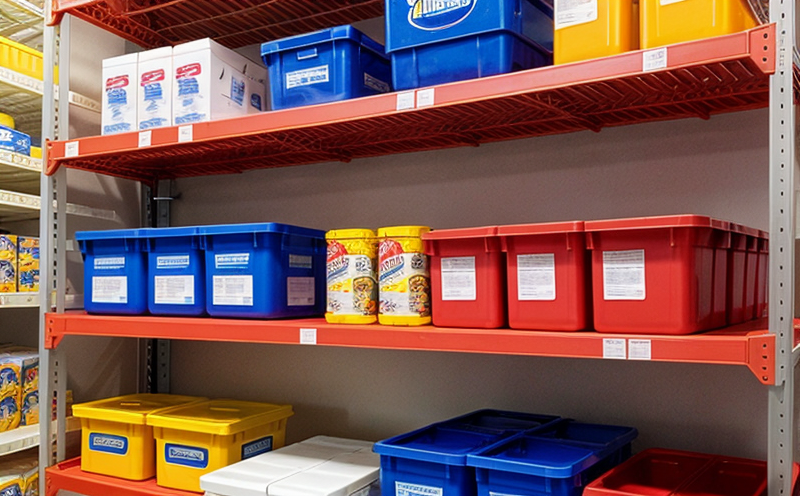ISO 34217 Packaging Material Interaction Testing
The ISO 34217 standard is a critical tool in ensuring that packaging materials do not interact adversely with food or feed products. This testing helps to safeguard the integrity and quality of packaged goods throughout their shelf life, ensuring compliance with international standards.
Shelf life and stability testing are crucial for maintaining product safety and efficacy. Packaging material interaction can lead to contamination, flavor transfer, discoloration, or other detrimental effects that compromise the quality of food and feed products. By identifying potential interactions early in the development process, ISO 34217 helps prevent costly recalls and reputational damage.
The testing protocol outlined in ISO 34217 involves placing a representative sample of the food or feed product into contact with the packaging material under conditions that simulate real-world storage environments. The interaction between the two is then evaluated for any changes over time, including chemical migration, physical alteration, and sensory degradation.
This testing method ensures that the packaging does not leach harmful substances into the product, thereby protecting consumer health and safety. It also helps to maintain the product's nutritional value, flavor profile, and visual appearance. The results of this testing are essential for compliance with food safety regulations such as the FDA in the United States and similar bodies worldwide.
The test procedure involves a series of steps designed to mimic the conditions under which the product will be stored, transported, and ultimately consumed. These include temperature variations, humidity levels, and exposure to light. By subjecting the packaging and product combination to these stresses over an extended period, ISO 34217 provides a comprehensive evaluation of potential risks.
The testing process is highly technical and requires precision in both specimen preparation and instrumentation. The specimens are prepared according to the standards specified in ISO 34217, ensuring that they accurately represent the product and packaging being tested. Specialized equipment is used to monitor changes in chemical composition, physical properties, and sensory characteristics.
The results of this testing are detailed in a comprehensive report that provides insights into any potential issues with the packaging material's interaction with the food or feed product. This information is invaluable for quality managers, compliance officers, R&D engineers, and procurement teams who rely on accurate data to make informed decisions.
| Application Area | Description |
|---|---|
| Bakery Products | Evaluating the compatibility of packaging materials with bread, pastries, and other baked goods. |
| Dairy Products | Ensuring that milk containers do not transfer unwanted flavors or odors to the product. |
| Fresh Produce | Maintaining the freshness of fruits and vegetables by preventing interactions with packaging materials. |
| Meat and Poultry | Preventing contamination from metal or plastic packaging that could affect the safety and quality of meat products. |
The testing protocol is not limited to these applications but can be adapted to suit a wide range of food and feed products. The results are crucial for ensuring compliance with international standards such as ISO 34217, which sets the benchmark for packaging material compatibility in the industry.
| Use Case | Description |
|---|---|
| New Packaging Design | Evaluating a new design to ensure it does not interact adversely with the product. |
| Material Substitution | Testing alternative materials for compatibility before introducing them into production. |
| Packaging Reformulation | Assessing changes in packaging composition or structure that could affect product integrity. |
| R&D Innovation | Supporting the development of new food and feed products by ensuring their compatibility with existing packaging materials. |
| Supplier Evaluation | Evaluating a supplier's compliance with quality standards for packaging material interaction. |
| Compliance Verification | Verifying that the packaging meets regulatory requirements and does not pose a risk to product integrity. |
| Product Recall Prevention | Avoiding recalls by identifying potential issues early in the development process. |
| Consumer Trust Building | Maintaining consumer trust by ensuring that packaging materials do not compromise product safety or quality. |
The testing protocol outlined in ISO 34217 is essential for maintaining high standards of food and feed safety. By identifying potential issues early, this testing helps to prevent costly recalls and reputational damage while ensuring compliance with international standards.
For more detailed information on the testing process, specimen preparation, instrumentation, and reporting requirements, please contact our expert team at [Contact Information].





